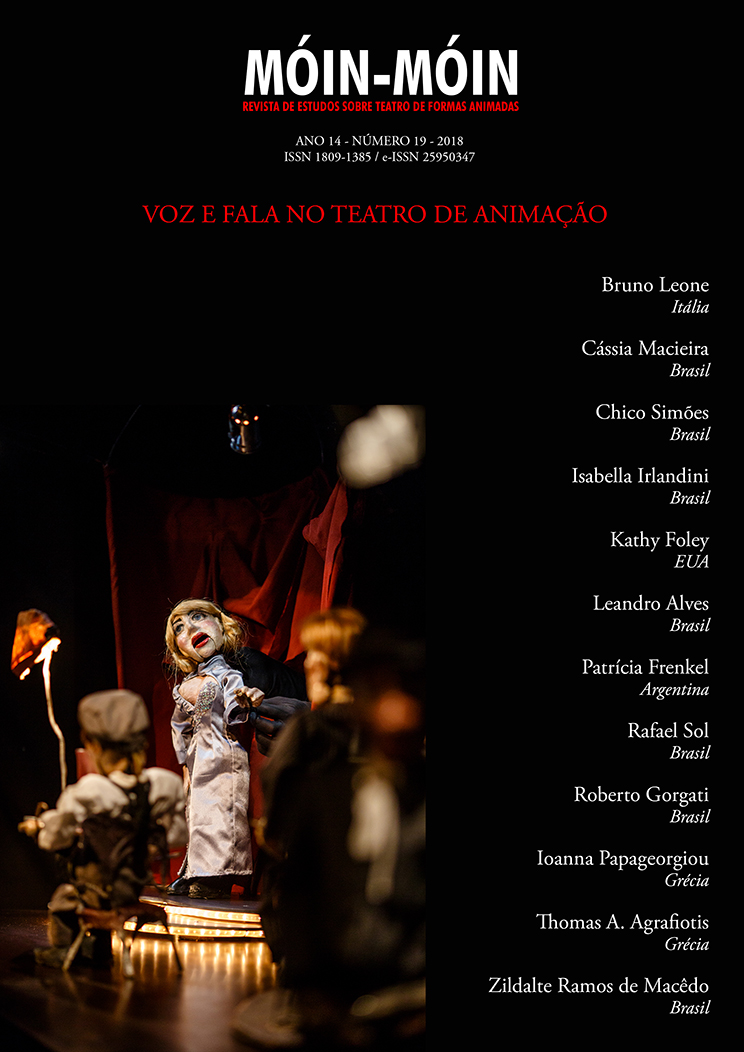A voz de polichinelo
DOI:
https://doi.org/10.5965/2595034701192018026Abstract
O presente artigo estabelece uma reflexão sobre a importância da célebre voz de um dos personagens mais famosos do teatro de bonecos italiano, o Polichinelo da tradição napolitana. O texto parte das experiências do próprio autor e bonequeiro Bruno Leone e aborda o ato da fala como constitutiva da identidade do referido personagem e alçado para além da mera compreensão verbal. Aborda desde a produção da voz do famoso boneco é feita com a pivetta e é usada em todo o mundo em personagens semelhantes ao Polichinelo, como o Mr. Punch, na Inglaterra; o Polichinelle, na França; ou Karagoz, na Turquia. A voz dá a impressão de que o boneco tem vida própria e que as suas ações e movimentos não são determinados pela vontade do bonequeiro, mas por uma liberdade própria que lhes permite lidar com as coisas de maneira autônoma, saindo das armadilhas que a cultura impõe. A voz e a fala dos bonecos representam um mundo distinto do que conhecemos, o bonequeiro deve dar passagem a este mundo.
Palavras-chave: Polichinelo. Voz. Tradição. Linguagem de animação. Teatro de Bonecos.
Downloads
Downloads
Published
How to Cite
Issue
Section
License
The readers are free to transfer, print and use the articles published in the Magazine, as long as there’s explicit mention to the author(s) and to Móin-Móin Magazine - Studies in Theater of Animated Forms and there are no changes on the original work. Any other use of the texts needs to be approved by the author(s) and the Magazine. In submitting an article to Móin-Móin Magazine - Studies in Theater of Animated Forms and have it approved, the author(s) agree to give away, without payments, the following rights to the Magazine: first publishing rights and the license for the Magazine to redistribute this article and its metadata to index and reference services that the editors consider appropriate.
The articles whose author(s) are identified represent the author’s point of view and not the official position of Móin-Móin Magazine. The author(s) commit to always mention the publication in the following way when publishing work in reference to the article published in Móin-Móin Magazine:
“This article was originally published by Móin-Móin Magazine volume (insert the volume), number (insert the number), in the year of (insert year) and can be accessed on: http://www.revistas.udesc.br/index.php/móin"
Plagiarism in any way constitutes an unethical publishing behavior and is unacceptable. Móin-Móin Magazine holds the right to use software or other plagiarism tracking methods to scan the submitted works.
![]()
This journal uses Attribution-NonCommercial 4.0 International– (CC BY NC 4.0).






